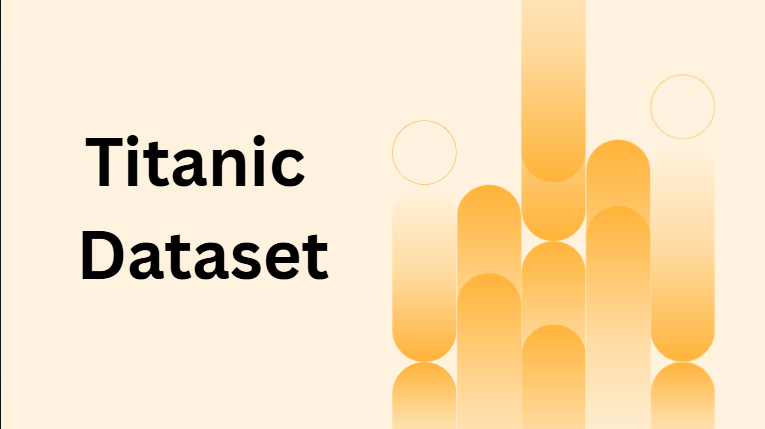The Titanic dataset is one of the most famous and widely used datasets in the world of data science and machine learning. It is based on the real-life tragedy of the Titanic ship, which sank in 1912 after hitting an iceberg. The dataset helps people learn how to work with real data by predicting who survived the disaster.
The dataset is often used by beginners to practice data cleaning, analysis, and building predictive models. It is available for free on platforms like Kaggle, where users can join competitions to test their skills.
2. What is Inside the Titanic Dataset?
The Titanic dataset contains information about the passengers who were on board. Each row in the dataset represents one passenger, and each column gives details about that passenger.
Here are the main columns in the dataset:
- PassengerId – A unique ID given to each passenger.
- Survived – 0 means the passenger did not survive, and 1 means they did.
- Pclass – Passenger class (1st, 2nd, or 3rd).
- Name – The full name of the passenger.
- Sex – Gender (male or female).
- Age – Age of the passenger in years.
- SibSp – Number of siblings or spouses aboard.
- Parch – Number of parents or children aboard.
- Ticket – Ticket number.
- Fare – The price of the ticket.
- Cabin – The cabin number (sometimes missing).
- Embarked – Port of Embarkation (C = Cherbourg, Q = Queenstown, S = Southampton).
These features help data scientists explore patterns and make predictions about who survived and who didn’t.
3. Why is the Titanic Dataset So Popular?
The Titanic dataset is popular because it is simple, well-structured, and easy to understand. Yet, it contains enough complexity to teach important data science skills.
Here are some reasons why it’s so famous:
- Beginner-friendly – Perfect for learning data analysis.
- Historical value – Based on a true event.
- Good size – Not too small or too large.
- Useful for prediction tasks – You can use it for classification problems.
- Free to access – Available on Kaggle and many other platforms.
It’s often the first dataset that data science students work with.
4. How to Use the Titanic Dataset
Using the Titanic dataset involves several steps. Each step helps you build a stronger understanding of data analysis.
Step 1: Load the Dataset
You can download the dataset from Kaggle and load it using Python libraries like pandas.
import pandas as pd titanic = pd.read_csv(‘titanic.csv’)
Step 2: Explore the Data
Start by checking the first few rows and understanding what each column means.
titanic.head()
Step 3: Clean the Data
The dataset has missing values. You may fill or remove them to make your analysis better. For example, missing ages can be replaced with the average age.
Step 4: Analyze Patterns
You can explore survival rates based on gender, age, and class.
For example:
- Women had a higher chance of survival than men.
- First-class passengers survived more than those in third class.
Step 5: Build a Model
After cleaning and exploring, you can build a machine learning model to predict survival using algorithms like:
- Logistic Regression
- Decision Tree
- Random Forest
5. What Can We Learn from the Titanic Dataset?
By working on the Titanic dataset, learners can gain several valuable skills:
- Data Cleaning: Handling missing or incorrect data.
- Exploratory Data Analysis (EDA): Understanding patterns using charts and graphs.
- Feature Engineering: Creating new useful features.
- Machine Learning Basics: Training and testing predictive models.
- Data Visualization: Using tools like matplotlib or seaborn to make graphs.
It’s a practical way to learn the end-to-end process of working with data.
6. Real-Life Lessons from the Titanic Dataset
The dataset also teaches us real-life lessons beyond data science:
- Social class mattered: Wealthier passengers had better survival chances.
- Women and children first: They were given more priority during evacuation.
- Data tells stories: Behind every number is a human life and a history.
It helps remind us that data is not just numbers—it represents real events and people.
7. Where to Get the Titanic Dataset
You can easily find and download the Titanic dataset from:
- Kaggle – The most popular source.
- OpenML – A public platform for datasets.
- GitHub repositories – Many users share versions of the dataset for free.
On Kaggle, you can even join competitions where participants predict survival outcomes using different models.
8. Common Challenges with the Titanic Dataset
While the dataset is easy to start with, beginners may face some challenges:
- Missing data – Many passengers have no recorded age or cabin.
- Imbalanced classes – More people did not survive, which affects model accuracy.
- Feature selection – Deciding which columns are useful for prediction.
Learning to handle these problems builds strong analytical skills.
9. FAQs
Q1. What is the main goal of using the Titanic dataset?
The main goal is to predict whether a passenger survived the Titanic disaster using different features like age, gender, and class.
Q2. Is the Titanic dataset free?
Yes, it is completely free and can be downloaded from sites like Kaggle.
Q3. What type of machine learning problem is it?
It is a binary classification problem, where the target variable (Survived) has two outcomes — survived (1) or not (0).
Q4. Can beginners use it easily?
Absolutely! It’s one of the best datasets for beginners to learn data analysis and machine learning.
Q5. What programming language is best for analyzing the dataset?
Python is the most commonly used language because of its powerful data science libraries like pandas, NumPy, and scikit-learn.
10. Conclusion
The Titanic dataset is more than just numbers—it’s a perfect starting point for anyone who wants to learn data science. With simple structure, real historical data, and rich learning opportunities, it allows learners to practice every step of the data process — from cleaning and visualization to modeling and prediction.

